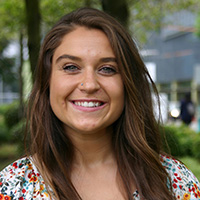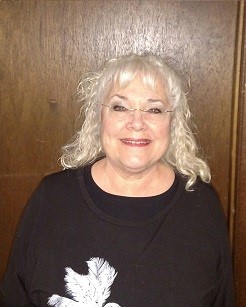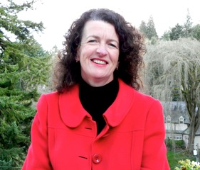OHSU Brain Institute Patient Stories
Doctors, nurses and other specialists transform lives at the OHSU Brain Institute. Meet patients who found a precise diagnosis and relief, sometimes after years of searching.
- Multiple sclerosis
- CIDP
- Myopathy
- Stroke
- Parkinson's disease and essential tremor: Meet OHSU patients who regained function and quality of life after DBS surgery
Multiple sclerosis
Marisa's story

Marisa Twarowski learned she had multiple sclerosis as a teenager. At first, her family was devastated. But with the care and encouragement of her doctor at the Multiple Sclerosis Center, Marisa refound her footing.
Dr. Vijayshree Yadav "kept saying that her goal was to ‘capture’ Marisa’s MS where it was,” says her mom, Tina Twarowski. “Those were her words: ‘We’re going to capture it and not let it grow.’”
Now Marisa is a confident adult who manages her condition. Read Marisa's story.
CIDP

In the winter of 2015, I started getting pain across my back and down my arms and legs. Over the next several months, it worsened. I wasn't sleeping. I was pacing every night.
Then I lost strength. I couldn't get out of my chair. I could barely use a walker. Pain pills didn't work. I had several visits to the local emergency room and hospital for multiple tests, and saw several specialists and doctors before ending up going to a neurologist.
Then my brother-in-law (a recently retired neurologist from OHSU) suggested I have my local neurologist refer me to the OHSU Brain Institute.
My doctor was very good and helpful; he really seemed to know what he was doing. He did all kinds of tests — a complete physical, nerve conductivity, spinal tap — which gave us a diagnosis: chronic inflammatory demyelinating polyneuropathy (CIDP).
My body's immune system was attacking the myelin, the covering protecting the nerves. It made me immediately feel better to know I had a diagnosis.
Once you know something's going on, you don't want to wait. I was admitted to OHSU, where I spent five days getting treatment that included steroids and IV immunoglobulin (IVIG) to help suppress my immune system. Everyone was great. I met new people every day, and one thing I also noticed was that they did a good job sharing information from one shift to the next.
I'll always have CIDP, but there is a large variation in how people recover. I was basically homebound before my diagnosis, and now I have strength to get up and down the steps. I only need a cane when I go outside. I've been very fortunate.

I had previously suffered from trigeminal neuralgia, which was like a lightning strike to the face any time something triggered it.
Dr. Kim Burchiel at the OHSU Brain Institute took care of the problem, surgically, both times that it flared up. I have also had chronic lymphocytic leukemia (CLL) for several years and was being watched by Dr. Andy Chen at the OHSU Knight Cancer Institute. (CLL has never presented any problems in the years since I was diagnosed.)
So I'd already had very positive experiences with OHSU when, in 2014, I started feeling weak in the lower part of my body. I had a hard time getting out of a chair or in and out of a car. Gradually, the weakness moved to the upper part of my body, also.
The neurologist that I had been referred to started me on in-home IV immunoglobulin (IVIG) treatments, but after the fourth session, I ended up in the hospital with extremely high blood pressure. After a week in the hospital and 10 weeks in a rehabilitation/physical therapy facility, I was finally able to return home.
I switched to a neurological specialist at OHSU for a second opinion and long-term treatment. He agreed with the original diagnosis of chronic inflammatory demyelinating polyneuropathy (CIDP), an autoimmune disease that attacks the myelin that covers nerve fibers.
He reinstated the intravenous immunoglobulin (IVIG) infusions, this time in a facility in Gresham. I continue to have the infusions every other week and take prednisone, gradually decreasing the dosage.
A year ago, I couldn't stand nor walk. With treatment, I have gradually gone from wheelchair to walker to cane to walking on my own. I continue to gain strength as I return to all my normal activities. Every morning I do 40 minutes of physical therapy exercises. I can now pick up and unload a 40-pound bag of pellets for my pellet stove!
This experience has been life-changing in many ways, and I am grateful to the doctors at OHSU for taking it from the scary place of uncertainty to the comforting place of possibilities.
Myopathy

In July 2016, I was having problems walking. My muscles were getting very weak. Although I was not in any pain, I was just getting weaker and weaker.
Everything came on so fast. I couldn't walk to get to my doctor's office. I had to go in a wheelchair. I couldn't brush my hair. I couldn't dress myself. I couldn't lift my arms to eat.
My doctor ordered blood tests, and they showed my creatine level was much higher than it was supposed to be. I stopped my medications, including cholesterol medicine. When I had my creatine retested a week later, it was lower — but still very, very high. My doctor thought it might be a neuromuscular condition.
I made an appointment with Dr. Nizar Chahin. My first impression was that he was very smart. His attitude was that we would get to the bottom of this and fix it. I felt like I was in good hands.
He immediately set up tests including a muscle biopsy, a CT scan, blood work, X-rays and a bone density test. I was diagnosed with necrotizing autoimmune myopathy, an acquired muscular disease. The cholesterol medication had caused an inflammation of my muscles.
We live almost five hours away, so he got me started with treatment that day. In fact, he and the team have always been good about setting up our appointments so we have enough time to make the journey to and from OHSU. I have regular IV immunoglobulin (IVIG) treatments at home now. Right now, I'm down to having them every other week.
Due to the muscle weakness in my legs, I could not get up and down my stairs. I spent two and half months in my bedroom. My goal was to be able to get down my stairs and help cook Thanksgiving dinner. That was the happiest day when I accomplished that goal.
In July, I gave up driving because my hands wouldn't work on the steering wheel, but by autumn I was able to drive my car again.
Last time I saw Dr. Chahin, he said I was about 95% back to normal. We are gradually working me off of the IVIG and steroid medication. He and I were both so excited when I was able to walk into my appointment and not use a wheelchair. He is very prompt with correspondence.
I used to walk two miles every day, and I am looking forward to getting back to that. I am amazed and very thankful. My advice is this: If you think you might have a problem, talk to your doctor and get any necessary tests to help put you on the right track.
Stroke

One Friday, I felt a tingle in my leg. On Saturday, I felt tired. Sunday I went to play a soccer game and had no energy. Monday, my left side felt numb, and by Tuesday, I couldn’t move my left side at all.
I was rushed to OHSU, and the doctors discovered I’d had a type of stroke: a lacunar stroke. A small blood vessel was closing, sealing off a small part in my brain, the part that controlled motion. I was in the hospital about a week.
After I got out of the hospital, I spent a lot of time recovering. Even six months after my stroke, I could only type with one hand and had problems walking. I was an athlete and played soccer. I was in my 40s. I didn’t want to give up and not do anything.
So my doctor, Dr. Helmi Lutstep recommended a relatively new type of physical therapy called high-intensity task training. I worked with Andrea Serdar, a physical therapist who’s been trained in this area.
Thanks to high-intensity task training, I can now do most of the things I couldn’t before — even things that seem as simple as carrying a coffee cup in each hand.
It took me about a year or so, but I got back to playing soccer, though sometimes I have balance issues when I make a kick. My relationship with Dr. Lutstep is more than a patient/provider relationship. I feel like they’re friends now, that I can come to them with any question.
I’ve now also run two marathons on behalf of the National Stroke Association. They reached out to me in an effort to raise awareness about women and stroke. I remember when I first started training, I would walk at the track, making sure to align my left foot with the white line, like teaching it where it needed to go.
It’s been almost five years now. Having a stroke this young was definitely a shock. It’s inspired me to get more involved with stroke education and awareness. I’m also interested in helping expand resources and create networks for stroke survivors and their families. It’s definitely helped me appreciate things more.
Share your story
We welcome stories from OHSU Brain Institute patients. Please email us.
Learn more
Learn about the treatments and services available at the OHSU Brain Institute.